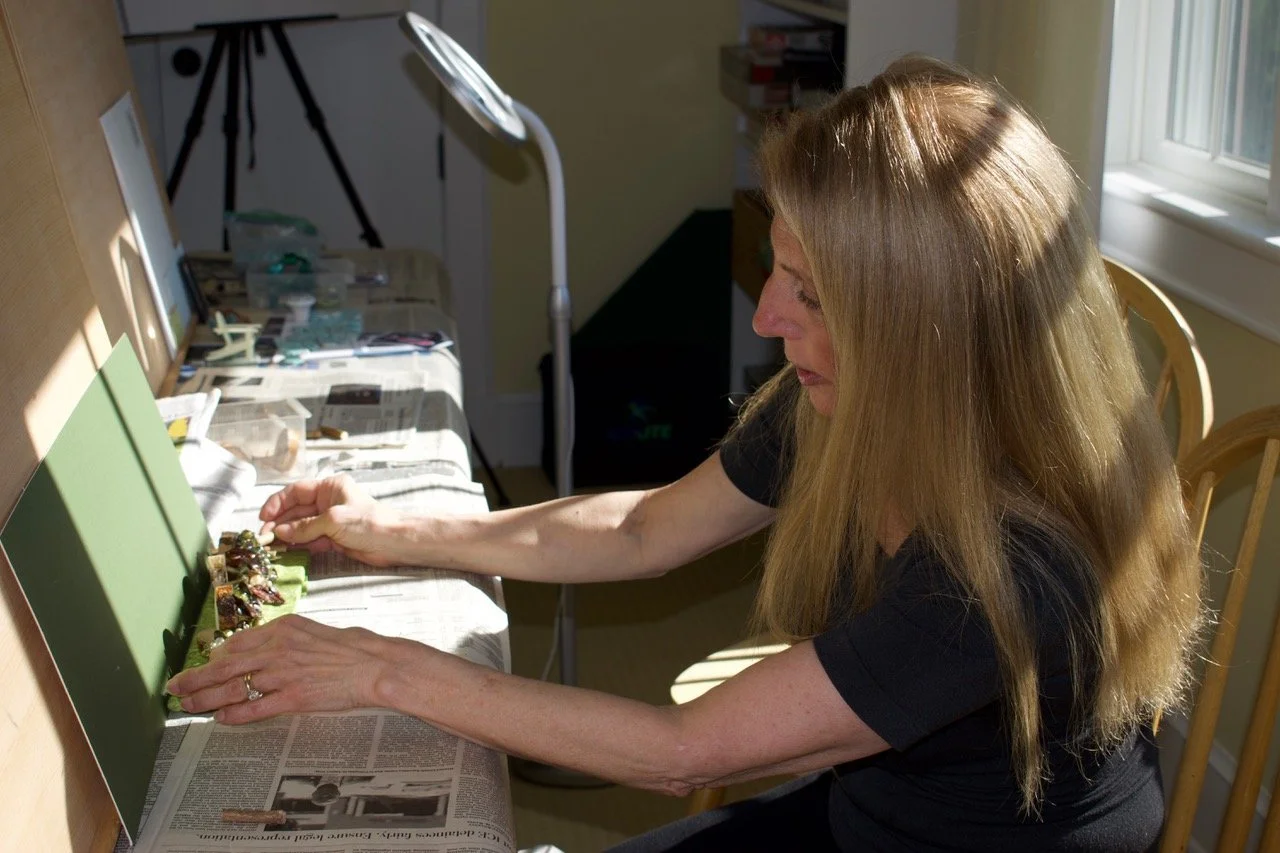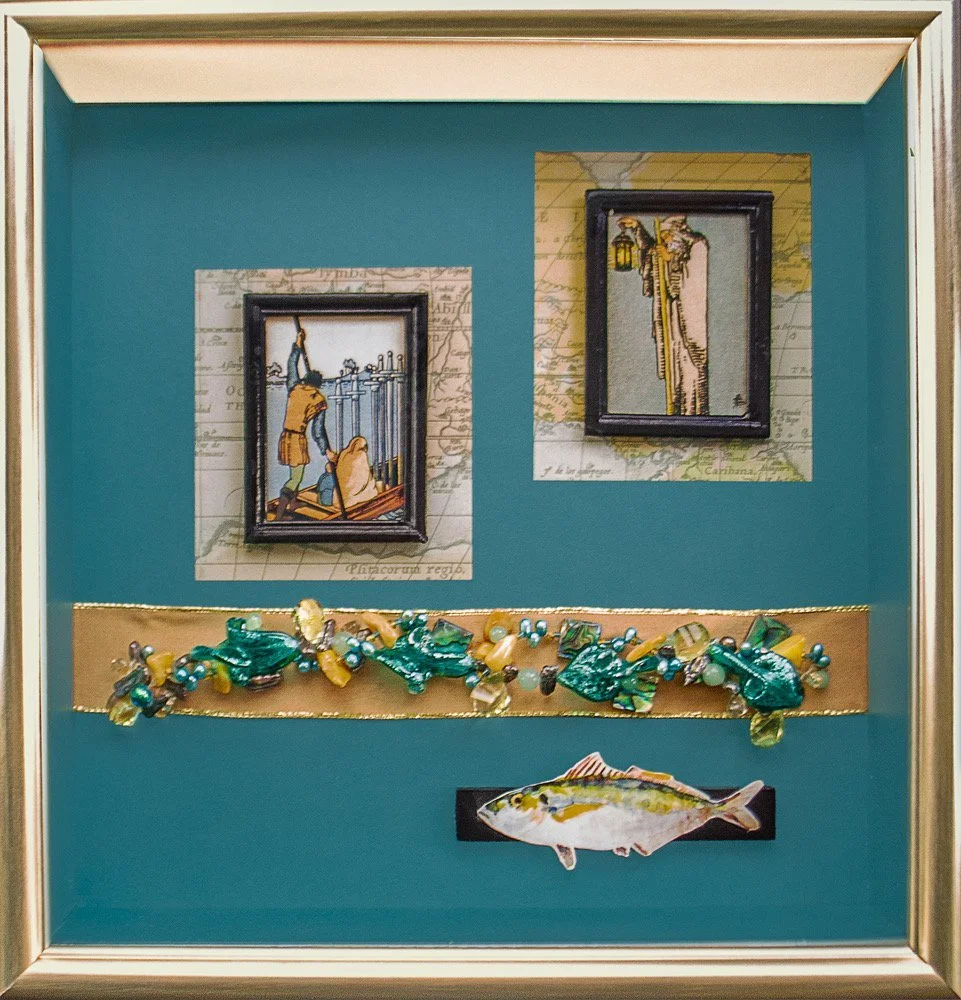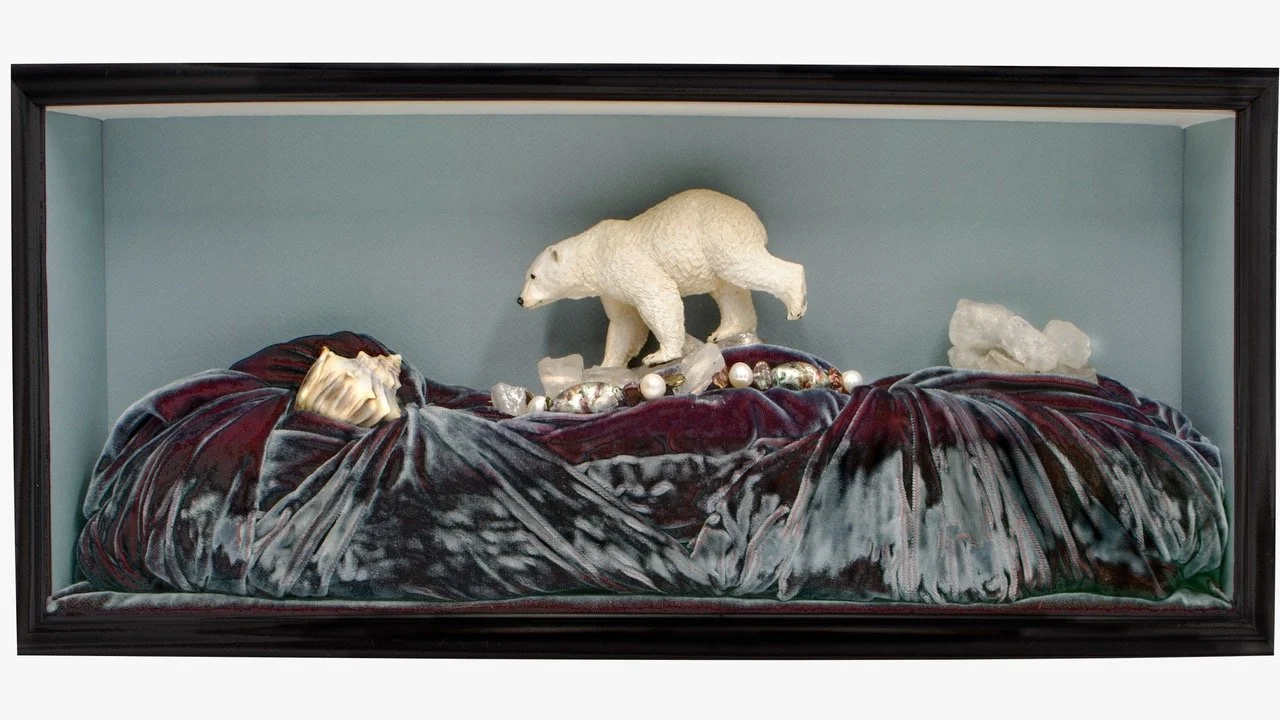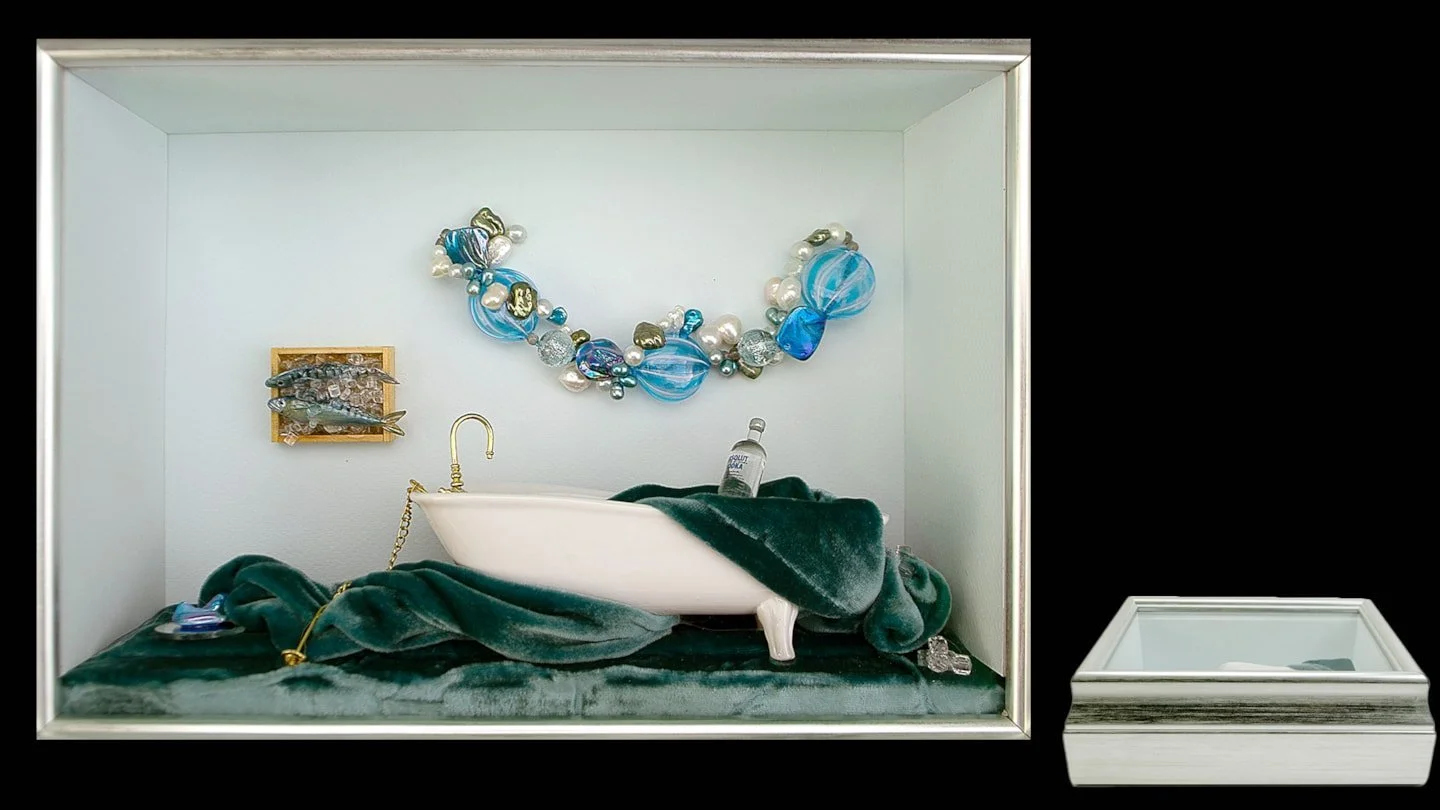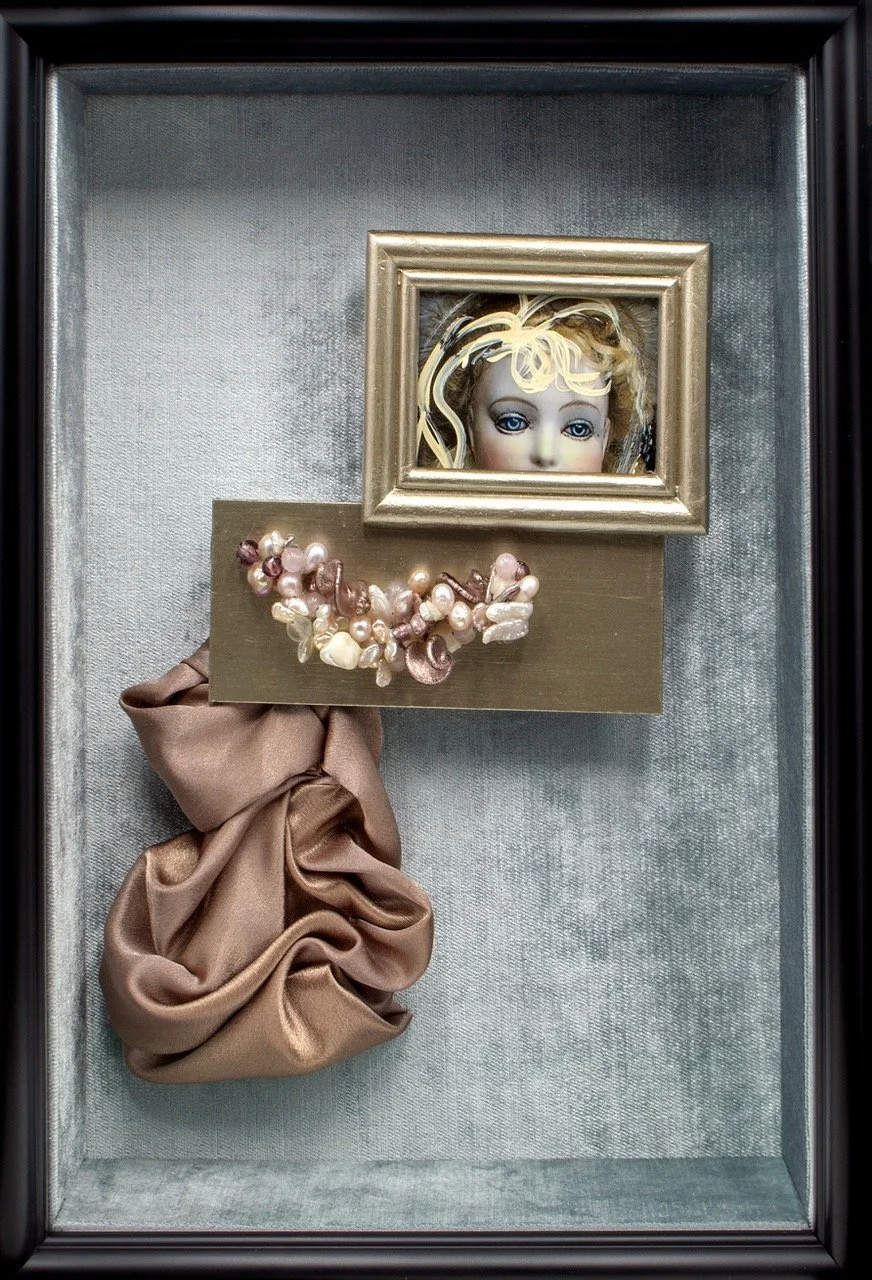Vivian Cavalieri: Assembling a Story
Vivian Cavalieri initially got her start as a jewelry maker, creating beaded necklaces inspired by her Venetian background. She later began making assemblages that include her beaded creations alongside a variety of materials to create works that address social issues. Each piece uses symbolism and multiple layers of materials and concepts to tell a story.
How did your creative journey begin?
Although my appreciation for art began early, my creative journey began much later. I spent much of my childhood in museums in Manhattan and in Venice but since I could not draw or paint well, I always assumed that I lacked artistic talent. While that did not stop me from majoring in art history while at Harvard, it did lead me to enroll at the New York University School of Law. I spent the next 20 years representing museums, foundations, and other nonprofits. Though I spent weekends visiting museums and galleries, I never attempted to create art. After I left the practice of law, I started designing ornate necklaces with multiple strands tightly twisted, reminiscent of the Venetian torsades of my youth. But unlike those necklaces, mine included beads of amber, abalone, semiprecious stones, and freshwater pearls along with Murano glass. My goal at the time was simply to create objects of beauty. Ten years later, still working in mixed media, I shifted from jewelry design to conceptual art. I sought to imbue my necklaces with meaning by using segments in small-scale assemblages that highlight certain aspects of our society and frequently reference issues faced worldwide.
Where do you find inspiration for your work?
It took many years for me to realize how much my life has been bolstered by random acts of fate — where and when I was born and who I encountered. Thinking of challenges that I have not had to face, or what can be done to improve the world, I develop an idea for an assemblage. I begin the design in an unconventional way. I look carefully at one of my necklaces still in inventory and derive a feeling or vision from it. It may remind me of a location such as the sea or of an emotion such as sadness. I take the color palette from that necklace and build an assemblage around it.
How has your work evolved over the last few years?
I started creating assemblages in 2018 so there has not been a lot of time for evolution. I do, however, believe that the number of whimsical assemblages has diminished over the past couple of years.
What does a typical day in the studio look like for you, and how has your art practice grown or changed?
A typical day in the studio involves a lot of experimentation. I start a project by collecting items that have a color or conceptual link. Although I usually have a sense of the overall concept and design, I find that they don’t always work in concert the way I thought they would. At that point, I begin substituting miniatures, fabrics, and other components to form a cohesive whole. The shift from jewelry designer to assemblage artist was seismic, forcing me to acquire new skills such as woodworking and sewing and to consider space in a very different way. For the first time, I was confronted with the laws of gravity and the need to confine my designs within the four walls of a 4” deep custom frame.
Which experiences have impacted your work as an artist?
Impact on style: Shy by nature, I prefer to highlight an issue rather than to suggest a particular course of action. I aim to hold a private conversation with viewers about issues affecting our society and the world. I encourage a viewer to approach by creating an attractive, small-scale, 3D scene. I place the viewer in the scene by eliminating any barrier, using museum glass and a custom frame that curves outward. And then I highlight an issue such as immigration, social justice, and climate change. Growing up in Manhattan with an American-born mother and a Venetian-born father, I spoke both English and Italian and spent many childhood summers in Venice at the beach, visiting museums and churches, and spending time with relatives such as the painter Laura Padoa. Only years later did I realize how much that impacted my taste and sense of style. No wonder my palette has been described as “Italianate.” Bouncing back and forth from the US to Italy and from English to Italian, I never felt completely in sync with either culture. This has led me to use images equally from both cultures.
Impact on themes: Immigration. My father, who was Jewish, fled Italy a year after the 1938 enactment of the Racial Laws. His family scattered, and after many twists and turns during which he feared for his life, he ended up in the US. Seeing how the war experiences impacted him as well as his family who remained in Italy has made me particularly aware of the current dialogue regarding refugees that is taking place throughout the world. I have created assemblages about leaving one’s country, about arriving in the US as a refugee and am in the process of photographing my most recent work which deals with the reuniting of families in a new country.
Climate change: My studio overlooks our oyster farm on Chincoteague Island, a remote part of Virginia’s Eastern Shore with much natural beauty. It is adjacent to Assateague Island, a wildlife refuge and seashore. Seeing changes in the bodies of water surrounding both islands has made me increasingly aware of the impact of climate change. As a result, this theme often finds its way into my work.
How has social media impacted your work?
I started marketing my assemblages in July 2022. Aware of the importance of social media marketing, I opened an Instagram account in September 2022. While I am starting to develop a style and (slowly) a following, I am uncertain whether this is the right platform for me and whether social media in general is an effective way to sell my assemblages. Photographs rarely do them justice. Capturing a faithful image of any 3D artwork is tricky. In my case, this is further complicated by the fact that the assemblage is behind glass (albeit, museum glass) and its deep frame causes a shadow.
How do you decide what story to tell with each piece?
I try to address a different issue with each work, although I am occasionally inspired to create a few on the same theme.
Website: https://www.viviancavalieri.com/
Instagram: @vc_artworks_

